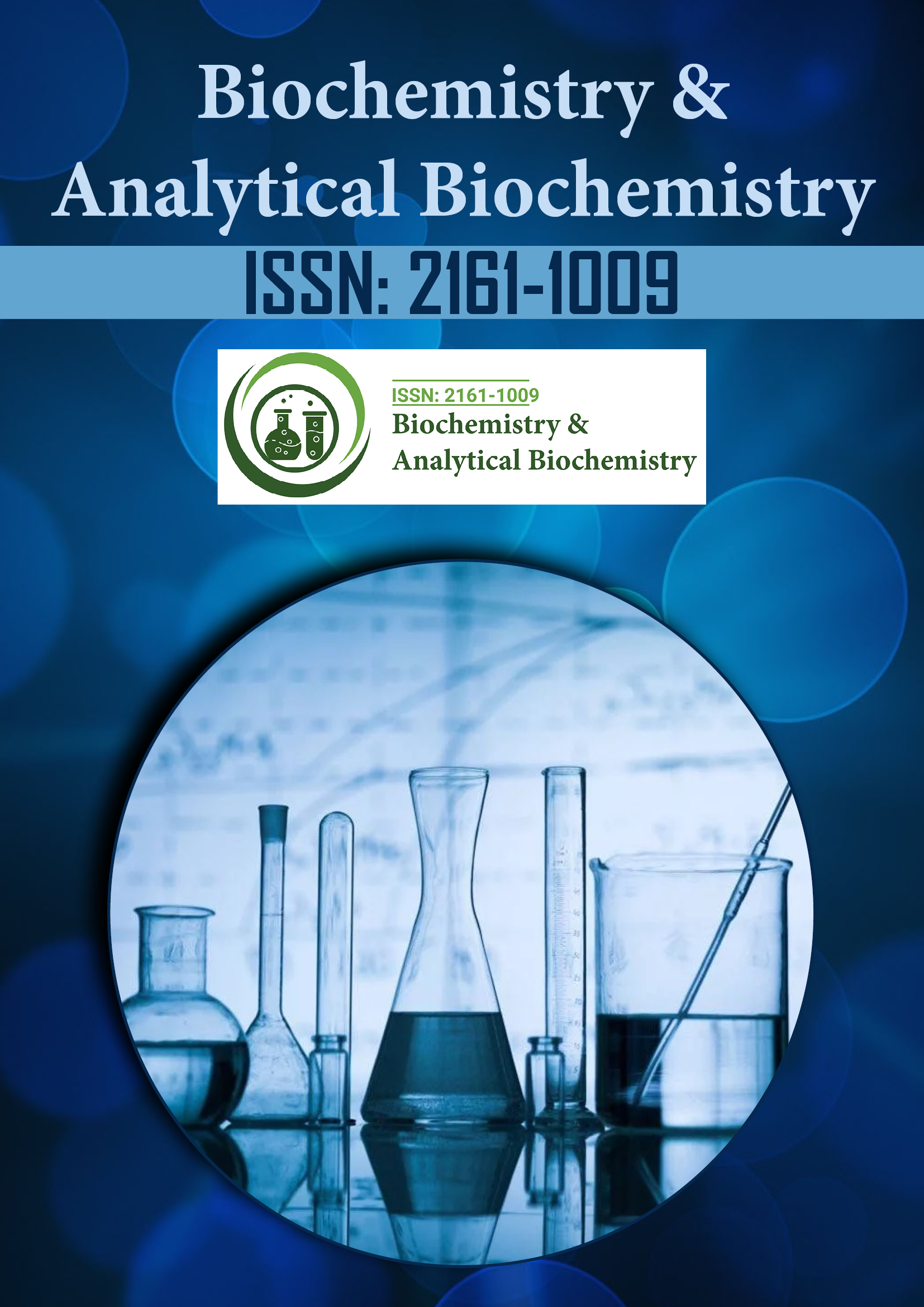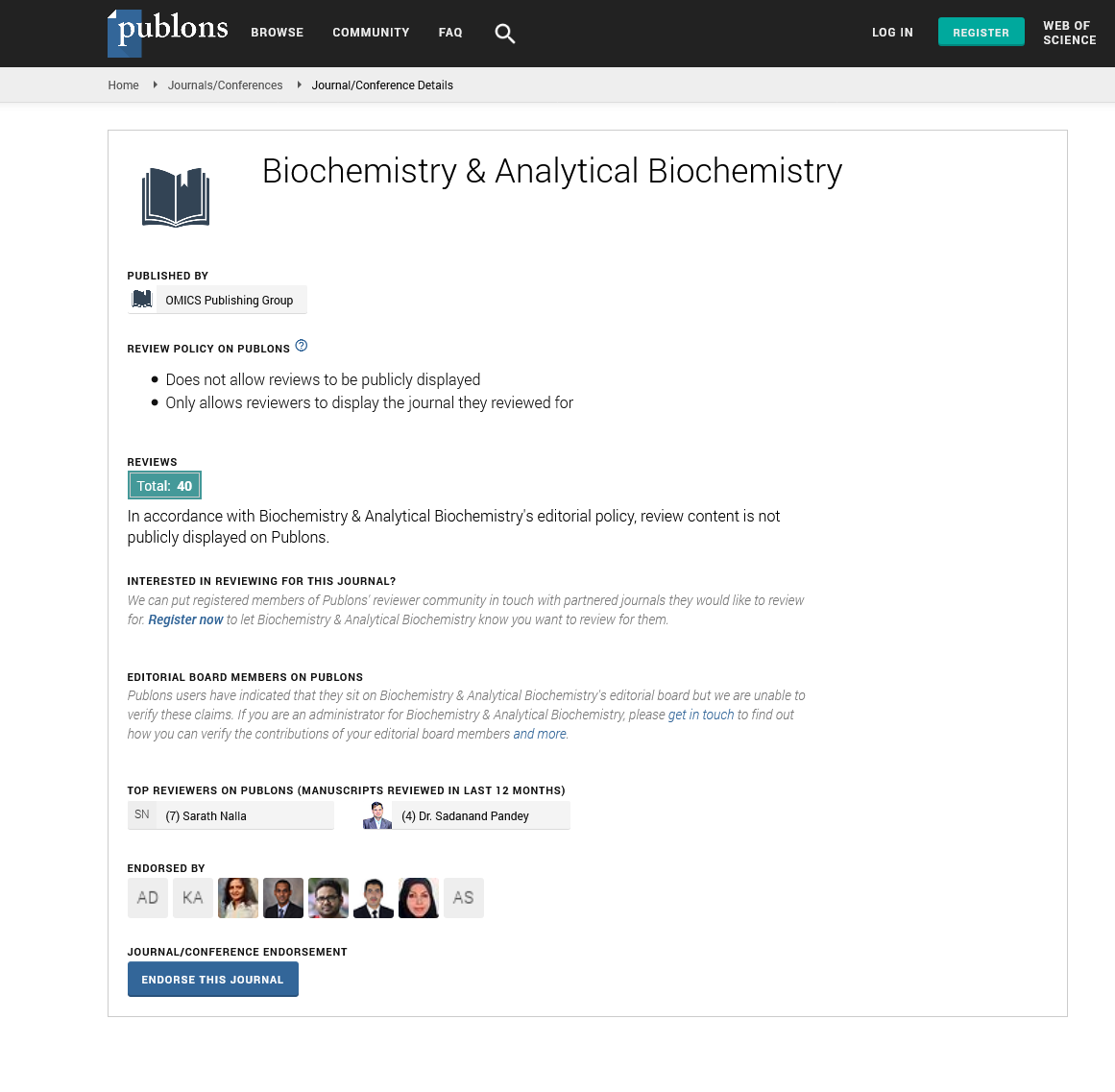Indexed In
- Open J Gate
- Genamics JournalSeek
- ResearchBible
- RefSeek
- Directory of Research Journal Indexing (DRJI)
- Hamdard University
- EBSCO A-Z
- OCLC- WorldCat
- Scholarsteer
- Publons
- MIAR
- Euro Pub
- Google Scholar
Useful Links
Share This Page
Journal Flyer

Open Access Journals
- Agri and Aquaculture
- Biochemistry
- Bioinformatics & Systems Biology
- Business & Management
- Chemistry
- Clinical Sciences
- Engineering
- Food & Nutrition
- General Science
- Genetics & Molecular Biology
- Immunology & Microbiology
- Medical Sciences
- Neuroscience & Psychology
- Nursing & Health Care
- Pharmaceutical Sciences
Commentary - (2025) Volume 14, Issue 2
Investigating Enzyme Kinetics and Their Applications in Biotechnology
Sarah Johnson*Received: 30-May-2025, Manuscript No. BABCR-25-29493; Editor assigned: 02-Jun-2025, Pre QC No. BABCR-25-29493 (PQ); Reviewed: 16-Jun-2025, QC No. BABCR-25-29493; Revised: 23-Jun-2025, Manuscript No. BABCR-25-29493 (R); Published: 30-Jun-2025, DOI: 10.35248/2161-1009.25.14.577
Description
Enzymes are the catalysts of life, accelerating biochemical reactions that sustain cells, tissues, and entire organisms. The study of enzyme kinetics provides critical insights into how these biological catalysts function, how they are regulated, and how their properties can be harnessed for practical applications in biotechnology. Enzyme kinetics examines the rates of enzymatic reactions and the factors influencing them, offering a quantitative framework that connects molecular biology with industrial and medical applications. The foundational concepts of enzyme kinetics were established in the early 20th century with the Michaelis-Menten equation, which describes the relationship between substrate concentration and reaction rate. This model highlights the importance of parameters such as Vmax, representing the maximum reaction velocity and Km the Michaelis constant, which reflects the substrate concentration required to achieve half of Vmax.
These parameters provide valuable information about enzyme efficiency and substrate affinity, serving as benchmarks for both natural enzymes and engineered variants. Modern research has expanded upon these foundations, exploring allosteric regulation, cooperative binding, and enzyme inhibition. Allosteric enzymes, for instance, exhibit conformational changes that alter their activity in response to regulatory molecules, while cooperative binding in multi-subunit enzymes results in complex kinetic behaviors. These mechanisms play crucial roles in metabolic regulation, ensuring that enzymatic pathways respond appropriately to cellular needs. Analytical biochemistry techniques have revolutionized the study of enzyme kinetics. Spectrophotometry, fluorescence assays, calorimetry, and stopped-flow techniques allow precise measurement of reaction rates under controlled conditions.
Advances in computational modeling and structural biology further enable researchers to visualize enzyme-substrate interactions at the atomic level, providing insights into catalytic mechanisms and potential sites for modification. The applications of enzyme kinetics in biotechnology are extensive. In medicine, enzyme inhibitors serve as the basis for many drugs, from antibiotics and antivirals to treatments for cancer and metabolic disorders.
Understanding enzyme kinetics is critical for designing inhibitors that are both effective and selective. For example, protease inhibitors are used in the treatment of HIV, while kinase inhibitors target signaling pathways in cancer therapy. In industrial biotechnology, enzymes are employed to catalyze reactions under mild conditions, reducing the need for harsh chemicals and energy-intensive processes. Enzyme kinetics guides the optimization of reaction conditions, enzyme engineering, and immobilization strategies to enhance stability and efficiency. Applications range from the production of biofuels and pharmaceuticals to food processing and waste management. Environmental biotechnology also benefits from enzyme research, as enzymes play a role in bioremediation processes that degrade pollutants and toxins. Despite the progress, challenges remain in fully understanding and manipulating enzyme kinetics. Enzymes often function in complex environments where multiple substrates, cofactors, and regulatory mechanisms interact, complicating kinetic analysis. Additionally, the stability of enzymes outside their natural environment poses limitations for industrial applications, driving research into protein engineering and synthetic biology to create robust biocatalysts.
Looking ahead, enzyme kinetics will continue to intersect with emerging fields such as nanotechnology, systems biology, and personalized medicine. By integrating kinetic data with systems-level analyses, researchers can better understand metabolic networks and design interventions that optimize health and productivity. Enzymes embody the elegance of biological design, transforming chemical reactions with remarkable speed and specificity. The study of their kinetics not only deepens our appreciation of life at the molecular level but also empowers us to harness their power for innovation. As biotechnology advances, enzyme kinetics will remain a cornerstone of research, guiding the development of solutions that address challenges in medicine, industry, and the environment.
Citation: Johnson S (2025). Investigating Enzyme Kinetics and their Applications in Biotechnology. Biochem Anal Biochem. 14:577.
Copyright: © 2025 Johnson S. This is an open access article distributed under the terms of the Creative Commons Attribution License, which permits unrestricted use, distribution, and reproduction in any medium, provided the original author and source are credited.

